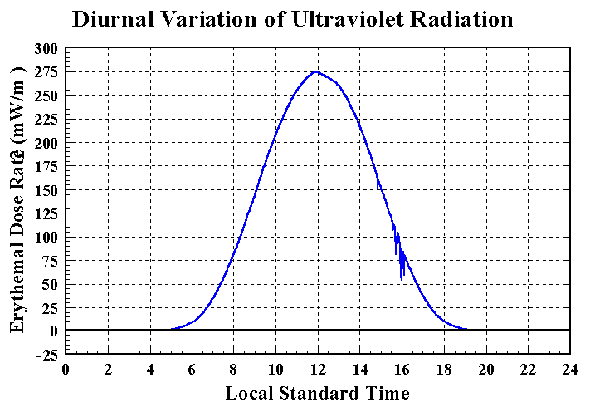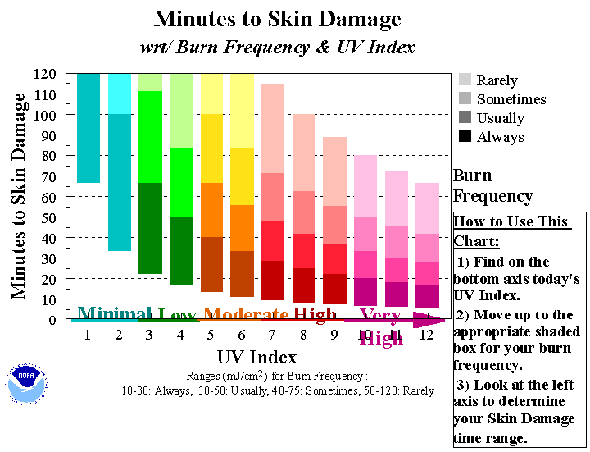The UV Index is a next day forecast of the amount of skin damaging UV radiation expected to reach the earth's surface at the time when the sun is highest in the sky (solar noon). The amount of UV radiation reaching the surface is primarily related to the elevation of the sun in the sky, the amount of ozone in the stratosphere, and the amount of clouds present. The UV Index can range from 0 (when it is night time) to 15 or 16 (in the tropics at high elevations under clear skies). UV radiation is greatest when the sun is highest in the sky and rapidly decreases as the sun approaches the horizon (Figure 1). The higher the UV Index, the greater the dose rate of skin damaging (and eye damaging) UV radiation. Consequently, the higher the UV Index, the smaller the time it takes before skin damage occurs (Figure 2).
There are two prices to pay for overexposure to UV radiation:
a severe sun burn following an intense short term overexposure,
and the more serious skin cancers developing after long term
overexposure. Melanoma, the more deadly of the two types of
skin cancer occurs when the patient has been subjected to
several intense short term overexposures. Non-melanoma skin
cancers, which are almost 100% curable, occur in people who
are overexposed for very long periods of time, like construction
workers, farmers, or fishermen. Long term overexposure to
UV radiation has been linked to the formation of cataracts
in the eyes as well.
Figure 1

Figure 2

Last Updated September 2, 1997 by Craig S. Long
Disclaimer and Reproduction Information: Information in NASD does not represent NIOSH policy. Information included in NASD appears by permission of the author and/or copyright holder. More